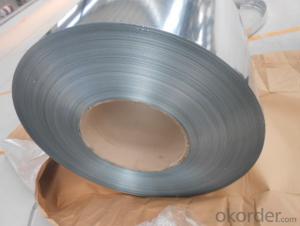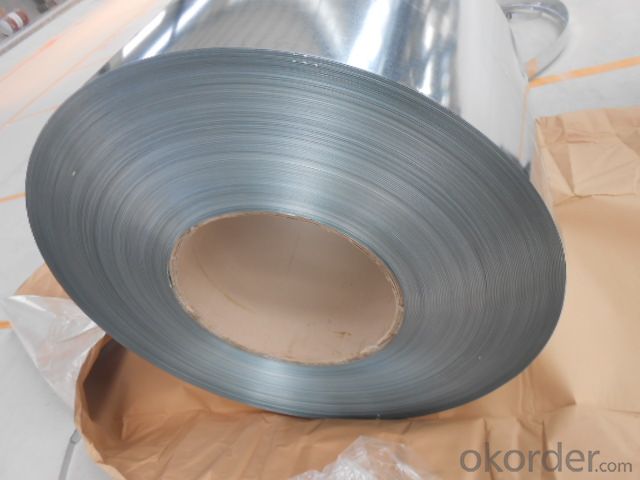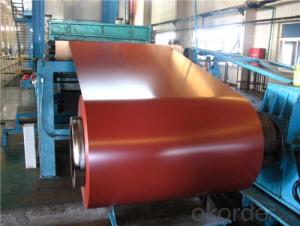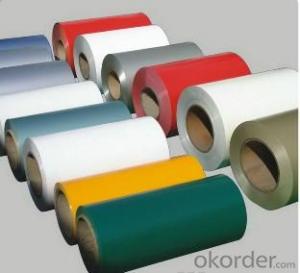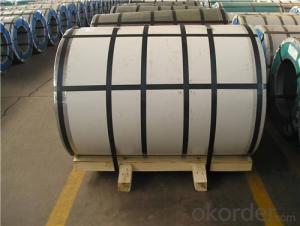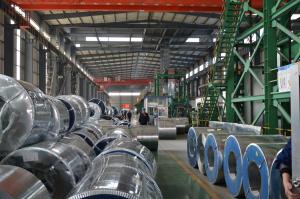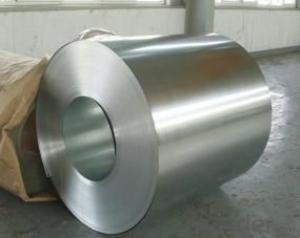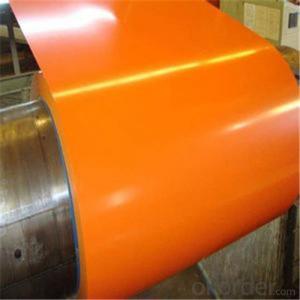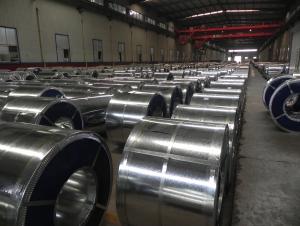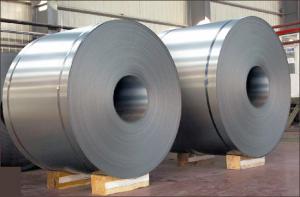galvanzied steel coil with 0.17mm
- Loading Port:
- China Main Port
- Payment Terms:
- TT OR LC
- Min Order Qty:
- -
- Supply Capability:
- -
OKorder Service Pledge
OKorder Financial Service
You Might Also Like
Hot dip galvanized steel coil
Technical Standard:JIS 3302 / ASTM A653 / EN10143/ GB/T 2518
Grade:DX51D/ S250,280,320GD,SGCC,SGHC,SGH340,SGH400,SGH440,G450,G550
Types:Commercial / Drawing / Deep Drawing / Structural quality
Width: 900mm/1000mm/1219mm/1200mm/1220mm/1250mm
Thickness: 0.17mm
Type of coating: galvanized
Zinc coating: Z40-275g/m2,Z40-Z450g/m2
Surface treatment:zero spangle / regular spangle/ big spangle
ID coil: 508mm or 610mm
Coil weight: 3-10/MT per coil
Package:Properly packed for ocean freight exportation in 20''container
Application::home appliances, constructions, building, machineries
- Q: What are they worth today? As well as a 1943 steel nickel?
- I think they are worth about a pennie.
- Q: Aluminum and Steel brittle or ductile based on these results? and why? Steel Aluminium% Elongation 0.2510.2705Modulus of E in ksi11833.33964.71Tensile Strength (ksi)87.5 51.5Yield Strength (ksi)78.5 41
- Only steel(of this pair)might be liable to brittle fracture,which would be implied by almost zero elongation or reduction in area at fracture.On this basis the steel has not failed by brittle fracture.I would expect much more elongation in pure aluminium than your sample shows so I presume it to be brittle unless it is an alloy rather than commercially pure aluminium.However brittle fracture in metals is a particular phenomenon to be determined by impact tests and examination of fracture surfaces and is particularly relevant to metals with the body centred crystal structure.
- Q: What are steel coils used for?
- Steel coils are used in a wide range of industries and applications, including manufacturing, construction, automotive, and appliances. They are commonly used in the production of various metal products such as pipes, tubes, sheets, and wires. Steel coils provide strength, durability, and versatility, making them essential in many industrial processes.
- Q: How is the critical temperature of structural steel affected by fireproofing? What temperatures can fireproofed structural steel withstand?
- This would depend upon the method of fireproofing. Steel used to be insulated with an asbestos coating. Of course the steel under the insulation had the same critical temperature as the uncoated steel but was protected from external heat by the insulation. More commonly it would be an alloy and there are so many that one could not guess except to say it should be higher than the original.
- Q: I'm a Hobbyist and want to Build my own axial-flow jet engine,can I use steel as the Turbine blades instead of Titanium which I can't get easily?? What about the other parts I can use for...?!
- Yes you can use steel but you will want to use super alloys like hastaloy and inconel. These withstand the heat in the combustion areas. These are the actual materials used in these stages. If you only want your engine to have a service life of a few hours a conventional hot work steel like H-13 will probably be OK Blades are investment cast in foundries that carefully control the rate of cooling to create a very uniform grain structure
- Q: What are the dimensions of steel coils used in the agricultural machinery industry?
- The dimensions of steel coils used in the agricultural machinery industry can vary depending on the specific application and machinery. However, common dimensions for steel coils in this industry range from 0.4 to 2.5 millimeters in thickness and 600 to 2000 millimeters in width. The length of the coils can vary based on the requirements of the machinery and production process.
- Q: What are the different methods of forming steel coils?
- There are several methods used for forming steel coils, depending on the specific requirements and applications. These methods include hot rolling, cold rolling, and continuous casting. Hot rolling is the most common method used for forming steel coils. It involves heating the steel billet or ingot to high temperatures and then passing it between a series of rollers to reduce its thickness and shape it into a coil. This process is typically performed above the recrystallization temperature of the steel, which allows for better shaping and improved mechanical properties. Cold rolling, on the other hand, is a process that is performed at or near room temperature. It involves passing the steel through a series of rollers to reduce its thickness and shape it into a coil. Cold rolling is often employed to produce steel coils with precise dimensions and excellent surface finish. It can also increase the strength and hardness of the steel. Continuous casting is another method used for forming steel coils. It involves pouring molten steel into a continuous casting machine, where it is solidified into a strand. The strand is then continuously fed into a series of rollers, which shape it into a coil. Continuous casting offers several advantages, such as improved efficiency, reduced energy consumption, and better control over the steel's composition and quality. In addition to these primary methods, there are various secondary processes involved in forming steel coils. These include pickling, annealing, and coating. Pickling removes any rust or scale from the surface of the steel, ensuring a clean and smooth finish. Annealing involves heating the steel to a specific temperature and then slowly cooling it, which helps to improve its ductility and reduce internal stresses. Coating is often applied to steel coils to provide corrosion resistance or enhance its aesthetic appeal. In summary, the different methods of forming steel coils include hot rolling, cold rolling, and continuous casting. Each method offers unique advantages and is chosen based on the specific requirements of the steel product. Additionally, secondary processes such as pickling, annealing, and coating are often employed to further enhance the quality and performance of the steel coils.
- Q: How do steel coils perform in corrosive environments?
- Steel coils exhibit excellent performance in corrosive environments due to their inherent resistance to corrosion. This is primarily because steel, being composed of iron and various elements like carbon, produces a protective layer called a passive film. This passive film acts as a barrier between the steel surface and corrosive elements, effectively preventing direct contact and minimizing the risk of corrosion. Moreover, steel coils can be coated with different protective coatings to enhance their corrosion resistance. Coatings like zinc or epoxy provide an additional layer of protection, significantly prolonging the lifespan of steel coils in corrosive environments. However, it is important to acknowledge that the performance of steel coils in corrosive environments can still be influenced by factors such as the type of corrosive agent, duration of exposure, and presence of other contaminants. In highly aggressive environments, such as those with high humidity, exposure to saltwater, or acidic chemicals, the protective layers on steel coils might deteriorate over time, thereby increasing the potential for corrosion. To ensure optimal performance in corrosive environments, it is advisable to choose steel coils with corrosion-resistant properties, such as stainless steel or galvanized steel. Regular maintenance and inspections are also crucial to promptly detect any signs of corrosion and implement appropriate measures to prevent further damage. In conclusion, steel coils generally exhibit good resistance to corrosion in most environments, but the severity of the corrosive conditions can ultimately impact their performance.
- Q: How are steel coils used in the production of structural components?
- Steel coils are used in the production of structural components as they serve as the primary raw material for various manufacturing processes. These coils are typically processed through rolling mills, where they are heated, shaped, and transformed into different structural shapes, such as beams, columns, and plates. The high strength and durability of steel make it an ideal choice for constructing buildings, bridges, and other infrastructure, ensuring the structural integrity and longevity of these components.
- Q: Can i make holes in iron and steel with somekind of drill bit. All i have is metal drill bits. Mabey like 68 of them but i dont know wich one to use and if they will penetrate.
- It really depends. If you are drilling iron, I assume you are talking about cast irons and there are many different types, some are easier to drill (and machine) than others. For steels, there are many many different types of steels which can have a huge range of physical properties. In fact, your drill bits are almost certainly made of some type of steel alloy. If your drill bit has the same hardness as the steel you are trying to drill, it will be difficult to drill. If the steel is harder than the drill bit, you won't make a hole, you'll just break your drill bit into smaller pieces. There are drill bits that use carbide inserts or diamond composite inserts and these will drill through steel. You can do a quick check. Take a drill bit and, just by hand, see if it scratches the steel. If it does, then the drill bit is harder than the steel and you can probably drill a hole. If you have trouble drilling holes, consult a machinist. There are many factors which influence how well you can drill holes including use of cutting oils/lubricants, cutting speed, pressure, rake angle, etc.
Send your message to us
galvanzied steel coil with 0.17mm
- Loading Port:
- China Main Port
- Payment Terms:
- TT OR LC
- Min Order Qty:
- -
- Supply Capability:
- -
OKorder Service Pledge
OKorder Financial Service
Similar products
Hot products
Hot Searches
Related keywords
